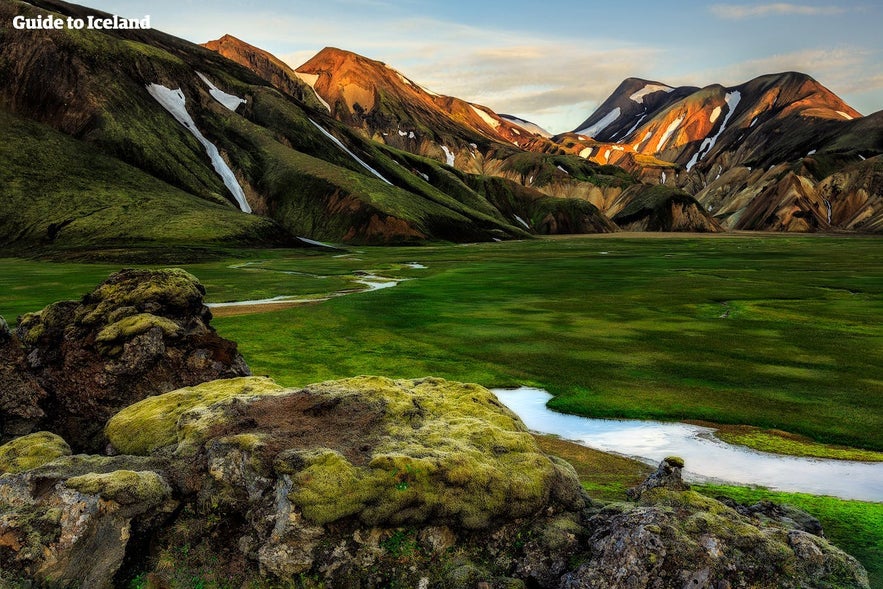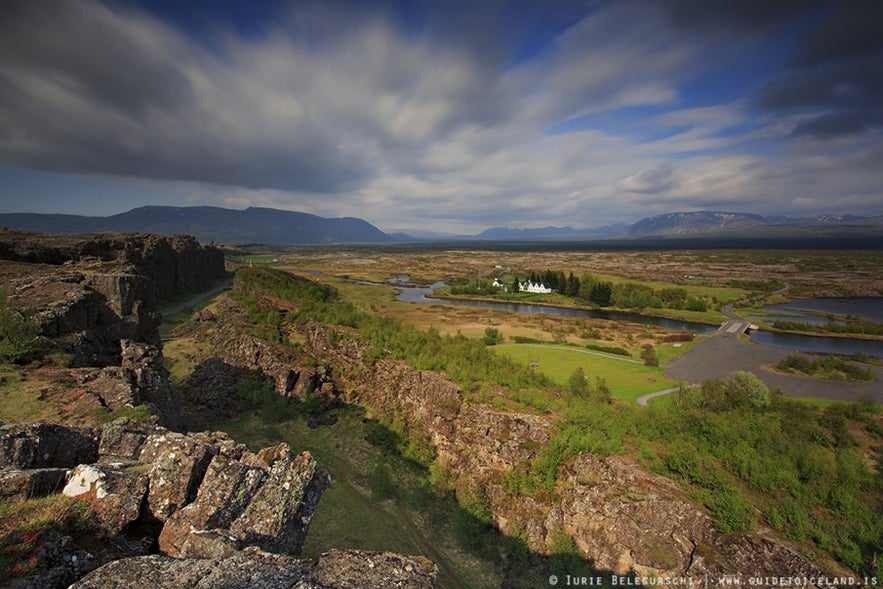
Which plants grow in Iceland? Are there Icelandic wildflowers, and if so, what are their names? Is it true that there are no trees in Iceland? And are there any edible or medicinal plants that grow in the barren landscape? Read on for an introduction to the flora to be found in Iceland.
As you arrive in Iceland, you could be forgiven for thinking you have landed on another planet. The lava landscapes that surround Keflavik International Airport are so otherworldly that you might find yourself wondering how anything, let alone people, can survive on this rock in the middle of the Atlantic.
Look a little closer, however, and you will discover a rich and delicate ecosystem, finding life in even the most extreme conditions. That perseverance is a hallmark of nature in Iceland and a testament to its resilience.
There might not be many trees in Iceland, but including flowers and herbs, fungi, and lichen, there are between 5000 and 6000 known plant species fighting for survival in this challenging environment. It is not within the scope of this article to discuss all of the plants in Iceland; instead, what follows will be a summary of some of the most iconic flora in the Icelandic psyche and scenery.
Key Takeaways
-
While exploring Iceland's diverse landscapes, you'll come across numerous tree species.
-
Despite Iceland's close proximity to the Arctic Circle, there are still numerous flowers, berries, and other edible plants growing in the wilderness.
-
Flora can also be found in Iceland's waters, which you may even see while exploring the beaches.
-
Iceland is also home to several moss species, which are as beautiful as they are delicate.
-
Learn how you can protect endangered flora and all other wildlife as you traverse Iceland's stunning natural environments.
Trees in Iceland (We Have Some!)
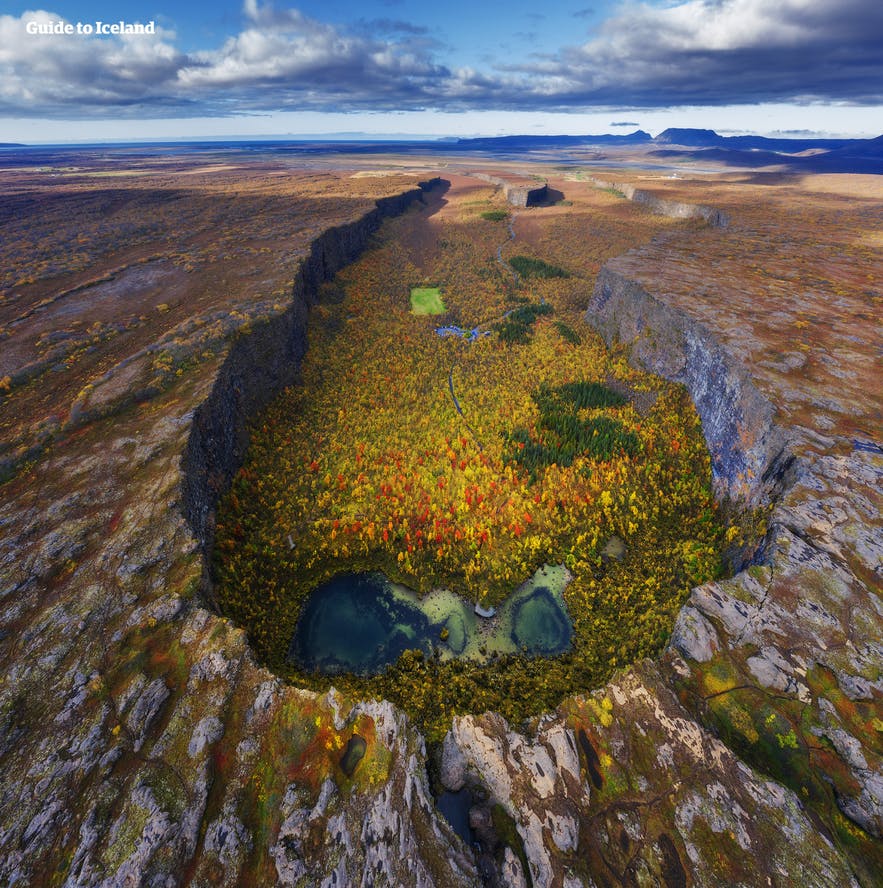
The old joke goes like this: "What do you do if you find yourself lost in an Icelandic forest? ... Stand up!".
This joke rests on the fact that there are very few trees in Iceland, and the ones that make it are quite small.
This wasn't always the case; we know from the written sources of the early settlers that the country was "forested from mountain to shore".
It is estimated that before the arrival of the Vikings in Iceland over 1000 years ago, 40% of the country was wooded. Mass deforestation occurred as the early Icelanders needed materials to build their ships, homes, and fires to keep them warm.
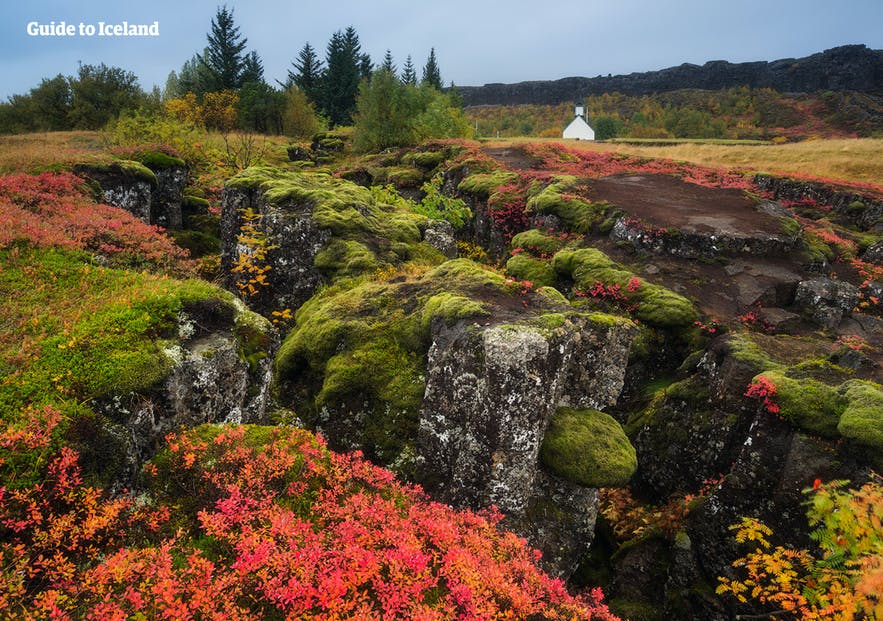
This process only took approximately 300 years, and since then, Iceland has suffered desertification as well as issues with soil erosion. This has created the barren, treeless geography that characterizes most of Iceland today.
That is not to say that there are no trees in Iceland! In recent years, considerable efforts have been made to recultivate woodlands with a significant degree of success.
- See also: The Forests of Iceland
Over 85 foreign tree species have been introduced to Iceland, the most common and triumphant to flourish include the Sitka spruce (Picea sitchensis), black cottonwood (Populus trichocarpa), and lodgepole pine (Pinus contorta). These varieties originate from Alaska and are grown as saplings in Icelandic greenhouses, as it is illegal to import live trees into Iceland.
Common native plant species include the downy birch (Betula pubescens), the rowan (Sorbus Aucuparia), the tea-leafed willow (Salix phylicifolia), and, less frequently, the Aspen (Populus tremula). Most of these grow to shrub height, with the birch reaching the maximum height of 50 feet (15 metres), but most often only 13-16 feet (4-5 metres).
The largest forest is Hallormsstadaskogur, and it can be found in East Iceland, close to the quiet town of Egilsstadir.
Mountain Avens (Dryas octopetala)
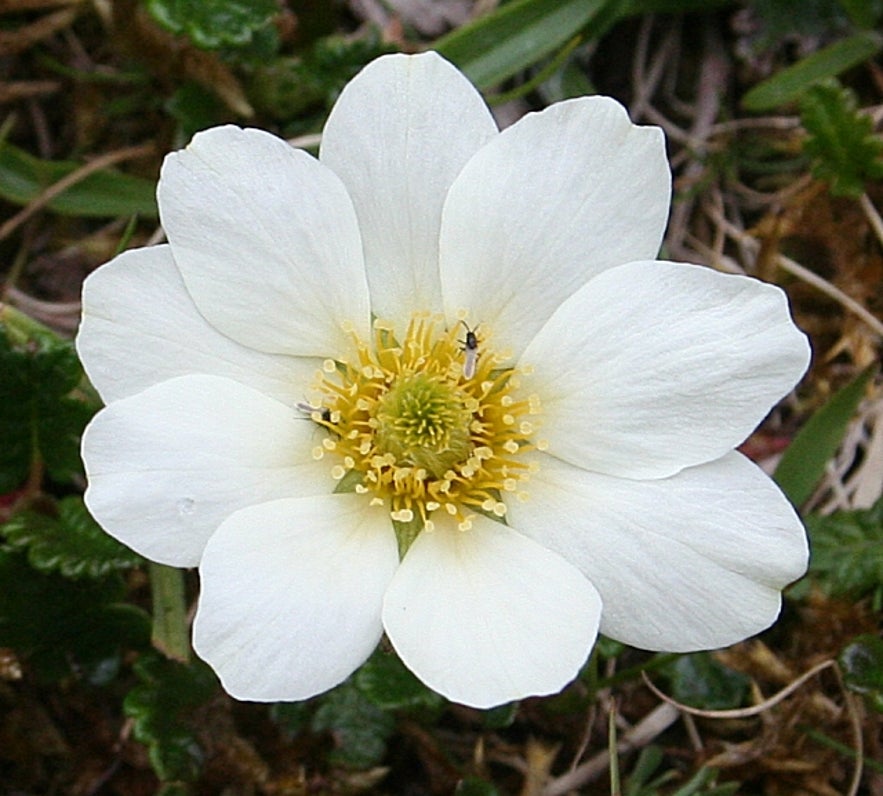 Photo from Wikimedia, Creative Commons, by Anne Burgess. No edits made.
Photo from Wikimedia, Creative Commons, by Anne Burgess. No edits made.
The mountain avens, or “Holtasoley,” was voted the National Flower of Iceland by the public in 2004. It is a white Arctic-alpine flowering plant that flourishes in every region of Iceland. This pretty wildflower is the favorite food of the rock ptarmigan, or “Rjupa,” leading it to be nicknamed “Rjupnalauf, 2 which directly translates to “rock ptarmigan's leaf.”
Throughout the ages, humans have made use of its herbal qualities, mainly as an astringent as well as an agent to reduce inflammation. Dried Holtasoley leaves once served as a valuable substitute for highly coveted tobacco and tea.
In Icelandic folklore, the flower is allegedly imbued with the power to attract wealth from the earth. To harness the flower's power, you have to follow some pretty shameful steps.
First, you must steal money from a poor widow while she is attending church, and then bury the spoils underneath a spot where the flower grows. The legend goes that your ill-gotten gains will then double.
This folk belief most likely contributed to another name the plant has been given: “Thief's Root”, and historically, thieves were frequently hanged at sites where the flower was found in abundance.
Arctic Thyme (Thymus praecox arcticus)
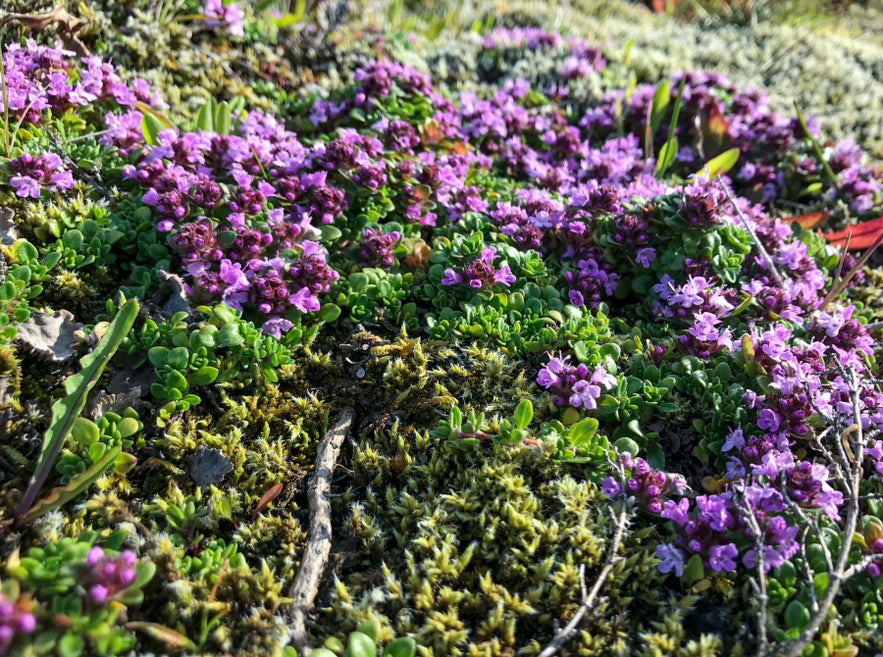
Arctic Thyme, “Blodberg” as it is known in Iceland, can be found across the island due to its proclivity for sandy and gravelly soils, of which there is no shortage.
The pretty purple flowers have long been used to make tea, and Blodberg is considered a staple in the world of Icelandic herbs. It is regarded to have medicinal properties as well as health benefits such as strengthening the heart and head, cleansing the blood, and contributing to menstrual regulation.
It is also naturally quite tasty, and its strong fragrance is similar to oregano. The scent is so strong that a good nose will often be able to smell it before it can be spotted by the eye.
If you would like to sample this versatile herb, you can find Blodberg tea in locations like the popular Te & Kaffi coffee shops or as an ingredient in Icelandic skincare products like Sóley Organics.
Lupine (Lupinus nootkatensis)
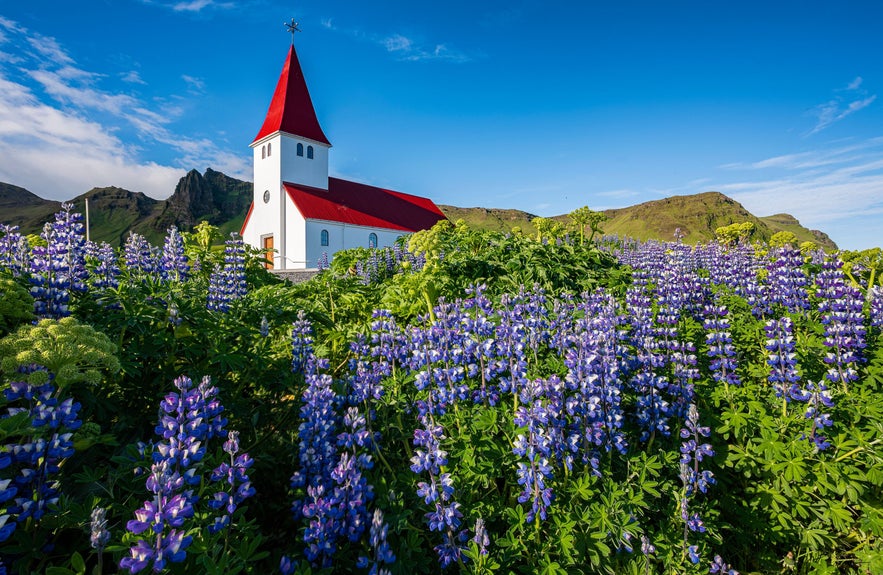
There is no other plant in Iceland as controversial as the iconic Lupine. The perennial plant is native to North America and was introduced to Iceland in 1945 to tackle topsoil erosion.
Since its arrival, the Lupine has prospered and spread all over the country, sometimes in locations where it is not wholly welcome. In many areas, it poses a threat to a number of indigenous plants, including some moss species, which are notoriously difficult to establish or recover.
Worries that lupines are taking over and replacing Iceland’s native plants have led to some backlash, but stopping their spread has been challenging.
However, not everyone is against the Lupine! Many enjoy the color they add to the Icelandic countryside, and the pretty purple flowers provide ample photo opportunities for visitors and locals alike.
- Learn more: The Dynamic Plant Lupin
Icelandic Berries
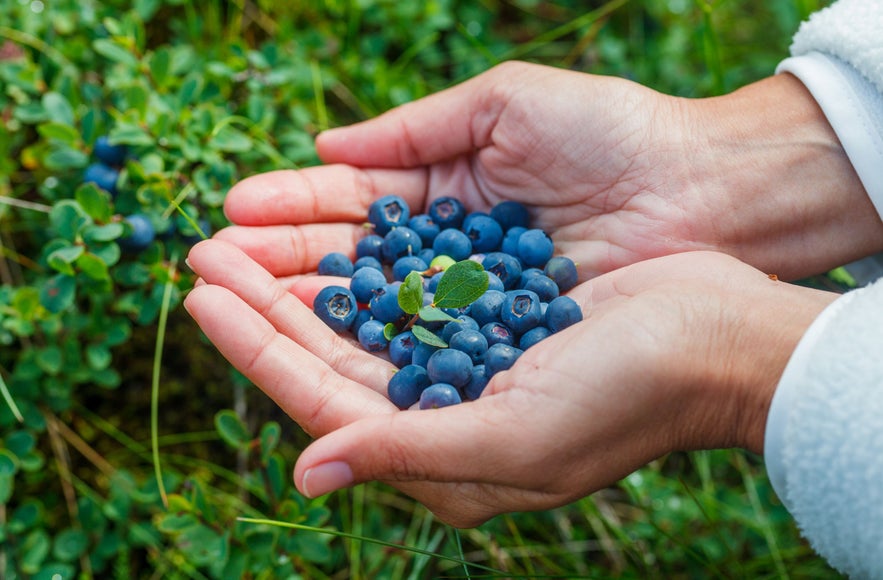
Icelanders love berries, and it is a cultural tradition to harvest these natural fruits each season to make a wealth of jams and jellies or to stockpile a healthy addition to much-loved desserts such as pies or the nation's favorite: Skyr.
Going out to collect berries is called "Berjamo," and it is characterized by red tongues and empty ice cream containers to collect your bounty of berries.
Berry-picking season in Iceland is traditionally between August and mid-September, but this, of course, depends on what type of berry you are after. Berries grow wild in Iceland and are free from pesticides, making for a real treat. Here's a guide to Icelander's favorite berries.
Bog Bilberry (Vaccinium ulignosum)
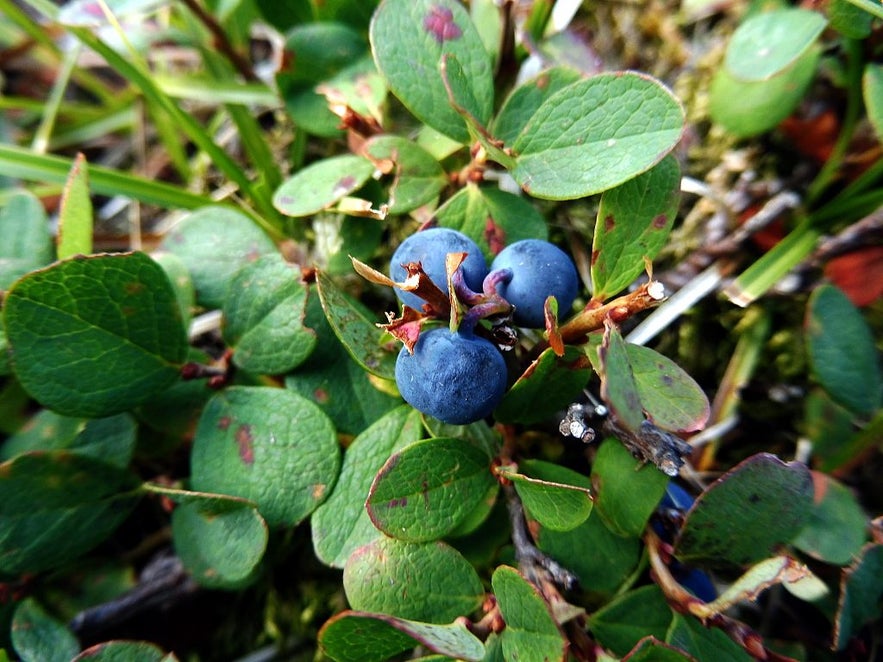 Photo from Wikimedia, Creative Commons, by Isidre blanc. No edits made.
Photo from Wikimedia, Creative Commons, by Isidre blanc. No edits made.
This is likely the most picked berry in Iceland since it grows across the entire country. It is called “Blaber” in Iceland, which translates to blueberry. However, it is, in fact, not a blueberry but a bog bilberry. They're confusing but delicious as they are much sweeter than your typical North American blueberry.
Bilberry (Vaccinium myrtillus)
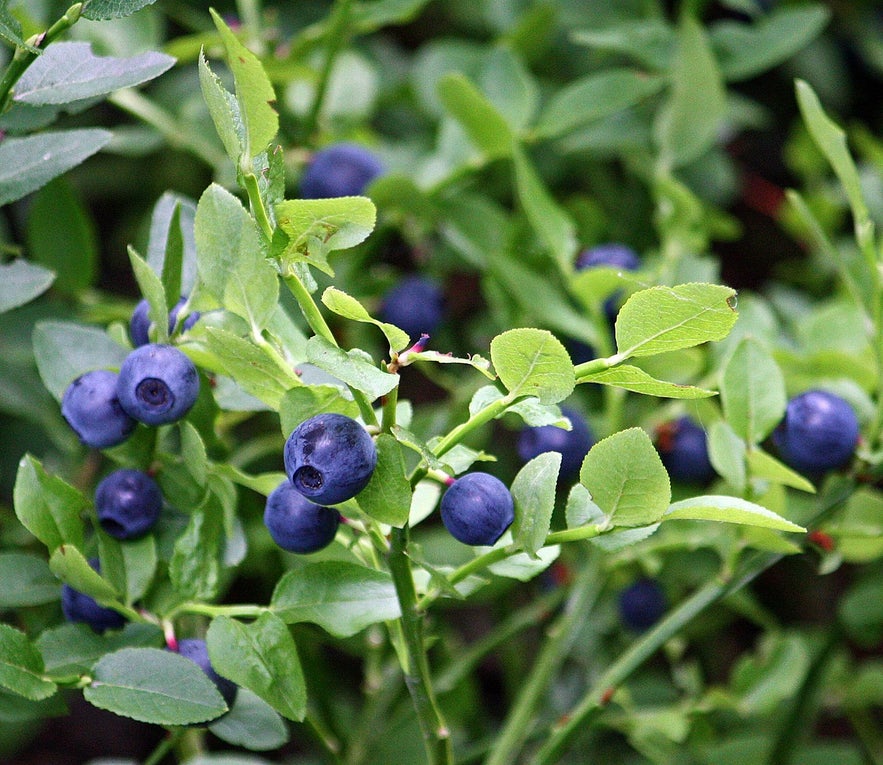 Photo from Wikimedia, Creative Commons, by Anneli Salo. No edits made.
Photo from Wikimedia, Creative Commons, by Anneli Salo. No edits made.
The common bilberry is also widely picked in Iceland, and it is called “Adalblaber”, which translates to “main blueberry.” It is, in fact, again, not a blueberry but a bilberry and grows abundantly in Northeast Iceland. Although it is slightly less sweet than its bog counterpart, it is widely collected, and both are used to make jams and to garnish Skyr and other desserts.
You can tell the difference between these two types of bilberry as the “main bilberry” is slightly smaller and darker in color. The leaves are always a good indicator; the bog bilberry will have more rounded leaves.
Crowberries (Empetrum nigrum)
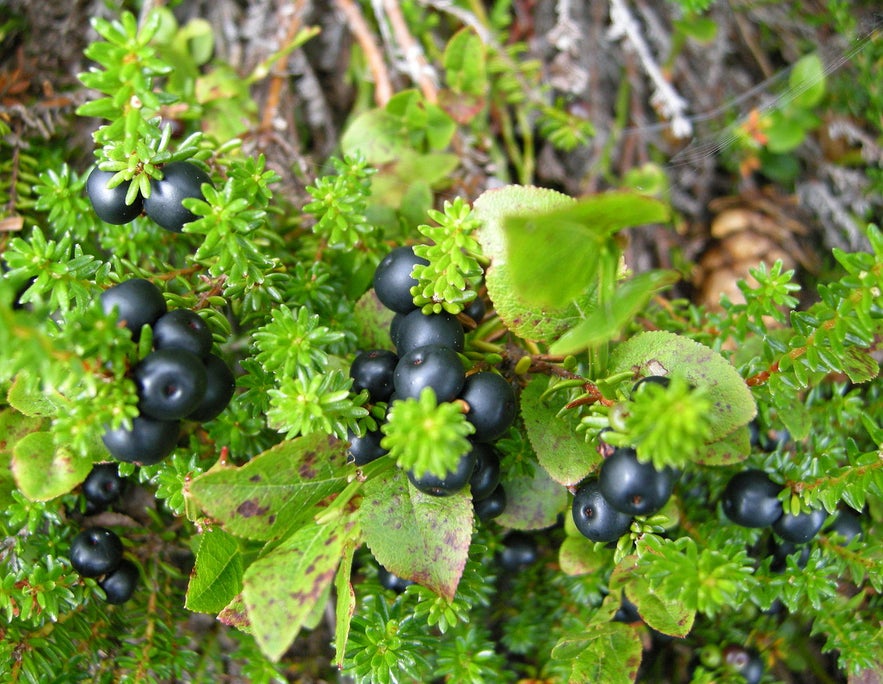 Photo from Wikimedia, Creative Commons, by Arnstein Rønning. No edits made.
Photo from Wikimedia, Creative Commons, by Arnstein Rønning. No edits made.
This evergreen plant belongs to the heather family and produces small black berries, which are called “Kraekiber” in Icelandic. Although they can be quite bitter to the taste, crowberries are great for cooking or being baked into muffins, and many people pick them to make jam.
They have also been used to make Iceland's only native wine, “Haustsol”, which translates to “Autumn Sun”, acclaimed for its rich taste and high anti-oxidant properties.
Wild Strawberry (Fragaria vesca)
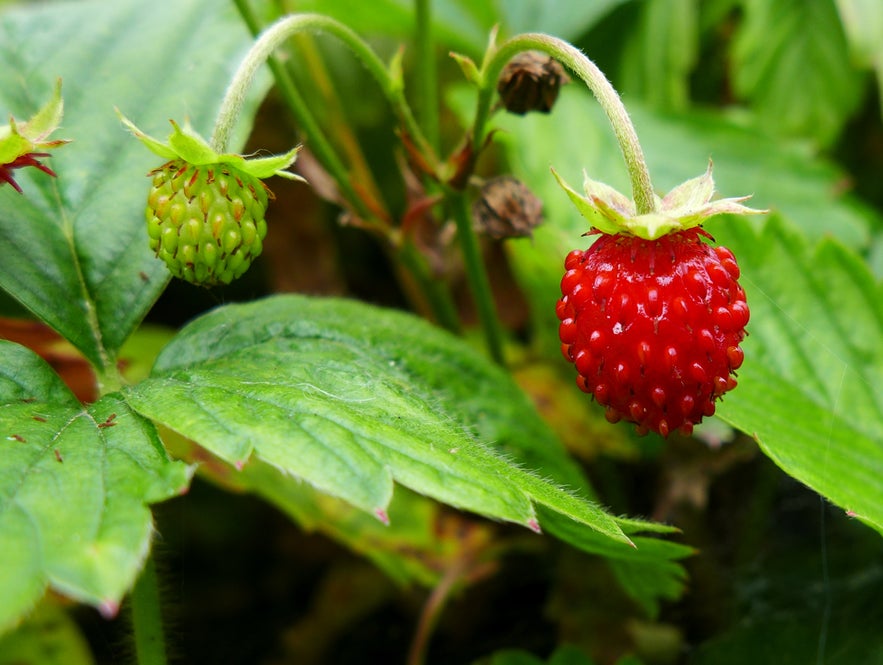 Photo from Wikimedia, Creative Commons, by Oxfordian Kissuth. No edits made.
Photo from Wikimedia, Creative Commons, by Oxfordian Kissuth. No edits made.
The most coveted of Iceland's indigenous berries, the wild strawberry, or “Jardarber,” is incredibly rare and hard to find in the wild.
They are most likely to be discovered in North Iceland and are very sweet and tasty.
Redcurrant (Ribes rubrum)
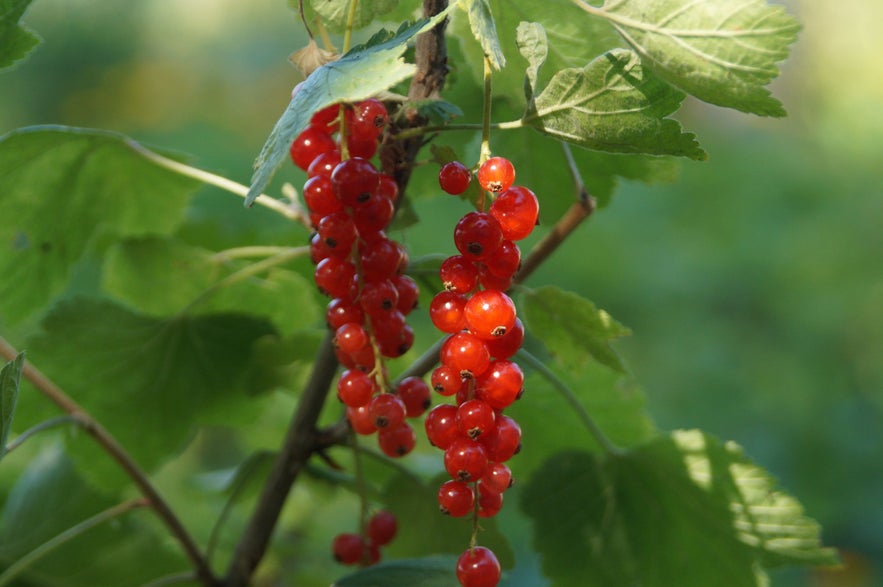 Photo from Wikimedia, Creative Commons, by Hans100. No edits made.
Photo from Wikimedia, Creative Commons, by Hans100. No edits made.
The redcurrant is a member of the gooseberry family, and although it is not indigenous to Iceland, it is grown in many gardens all over the country.
If you can beat the birds to the berries, they are excellent for making a delicate sweet jelly called “Rifsberjahlaup,” which is traditionally enjoyed with fine cheeses.
Stone Brambleberry (Rubus Saxatilis)
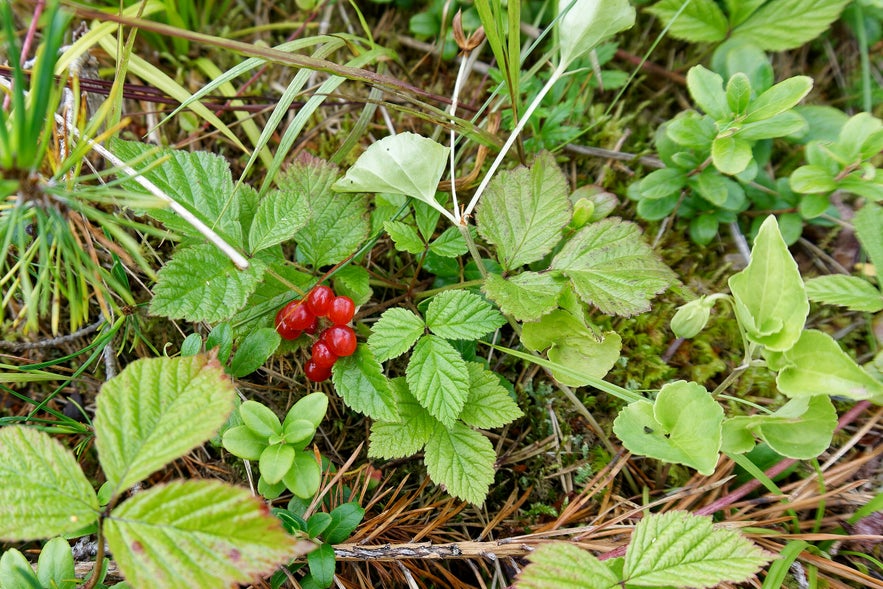 Photo from Wikimedia, Creative Commons, by Zinnmann. No edits made.
Photo from Wikimedia, Creative Commons, by Zinnmann. No edits made.
This delicate berry is called “Hrutaber” in Icelandic, which translates literally to “Ram's berry,” and like redcurrants, they are popularly made into delicious jellies to be eaten and enjoyed on special occasions.
The berries are small and red with a stone in the middle and are sour to the taste. Although they are found all over the country, they are most bountiful in the North of Iceland and the Snaefellsnes Peninsula.
Sheep Sorrel (Rumex acetosella)
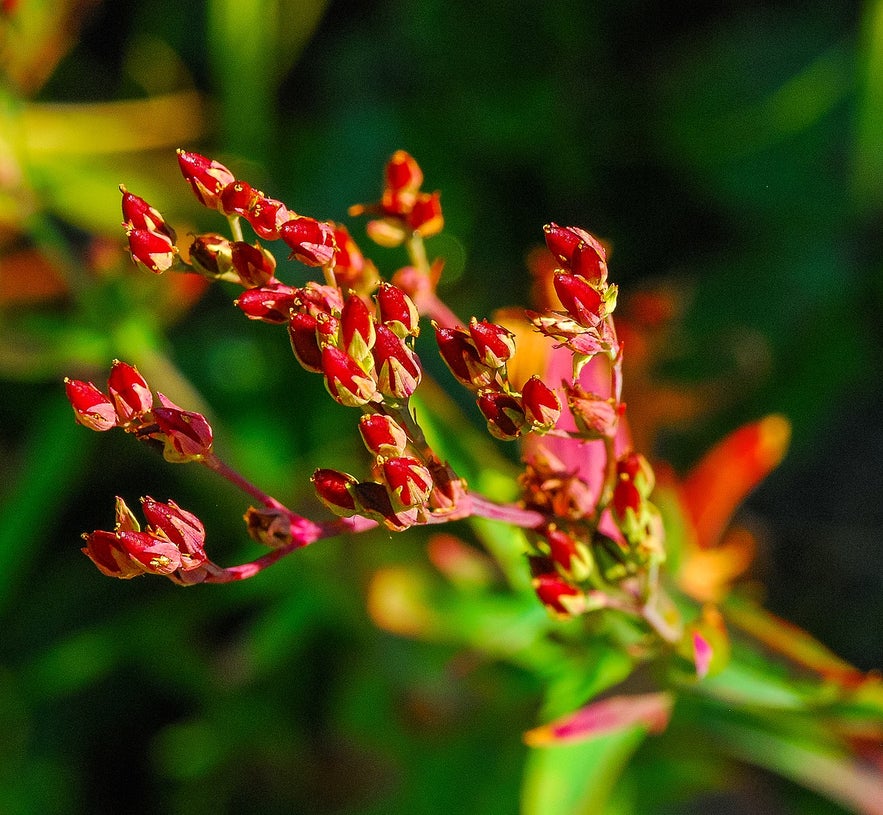
Photo from Wikimedia, Creative Commons, by Joshua Mayer. No edits made.
Sheep sorrel (or sometimes, “red sorrel”) is known as “Hundasura” in Iceland. It is a member of the buckwheat family, and it is favored for its tart and tasty leaves.
Icelanders grow up nibbling the sour leaves as children and continue to enjoy them throughout their lives. The leaves are a perfect addition to a salad or simply something to forage as you go for a hike.
Rhubarb (Rheum Rhabarbarum)
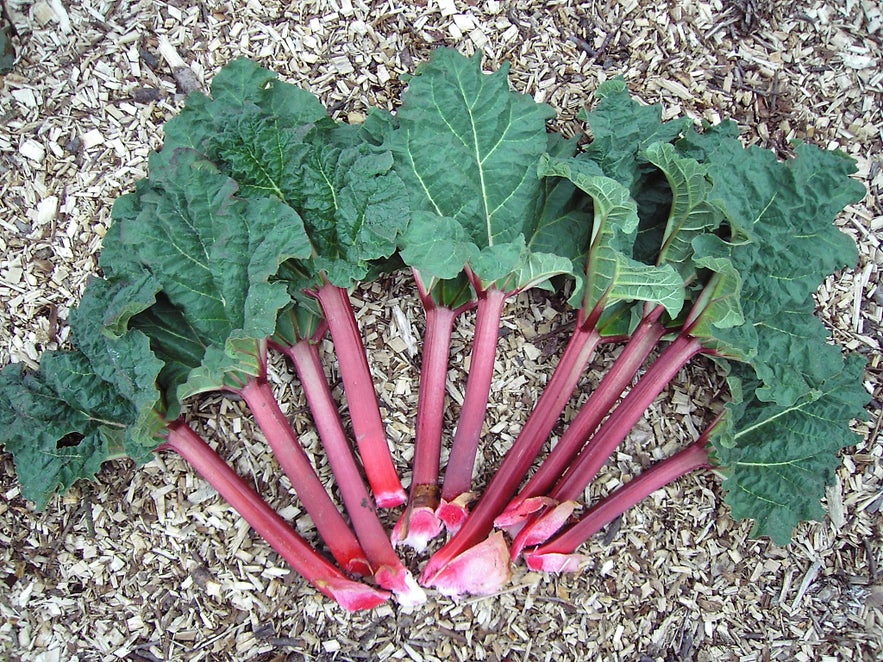 Photo from Wikimedia, Creative Commons, by Dieter Weber. No edits made.
Photo from Wikimedia, Creative Commons, by Dieter Weber. No edits made.
Rhubarb, or “Rabarbari” in Icelandic, is not indigenous to Iceland. It was introduced at the end of the 19th century, but since then, it has thrived in the climate, which is not common amongst exogenous plants.
No serving of Icelandic pancakes or waffles is complete without some rhubarb jam, and young children will often enjoy a stick of rhubarb dipped in sugar. In the past, it has been used as a pesticide and dye. Be careful not to eat the leaves, as they are poisonous!
Dandelion (Taraxacum family)
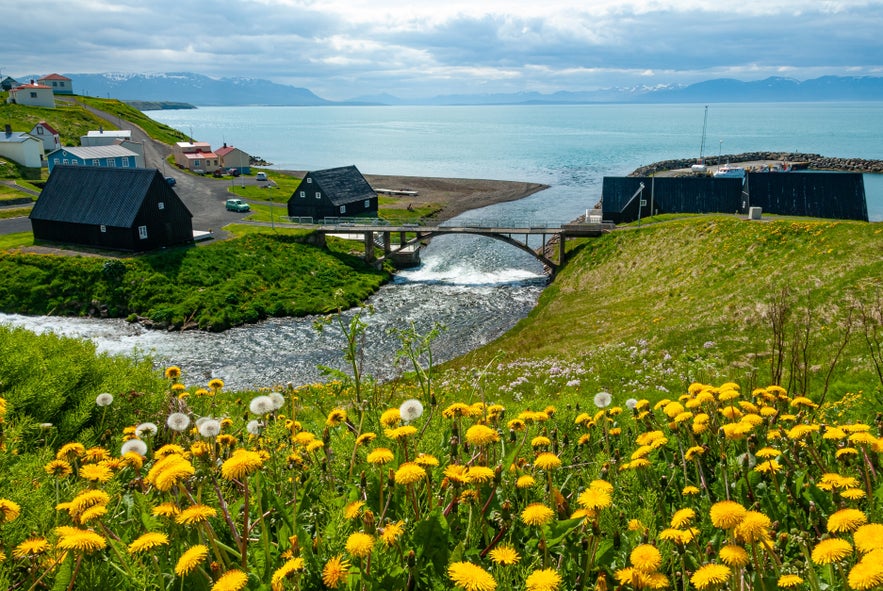
Dandelions grow everywhere in Iceland and in huge abundance. These wildflowers are suited to disturbed soils, which are common across Iceland.
Although several types of dandelions grow in Iceland, most Icelanders just refer to them all as “Tunfífill” or simply “Fífill”.
Dandelions are rich in vitamins and minerals, and the whole plant is edible from flower to root. They have long been featured in the Icelandic diet, be it as tea or tonic or by adding the leaves to salads. The root of the plant has long been used as an invaluable coffee substitute since coffee was expensive and often in short supply.
Caraway (Carum carvi)
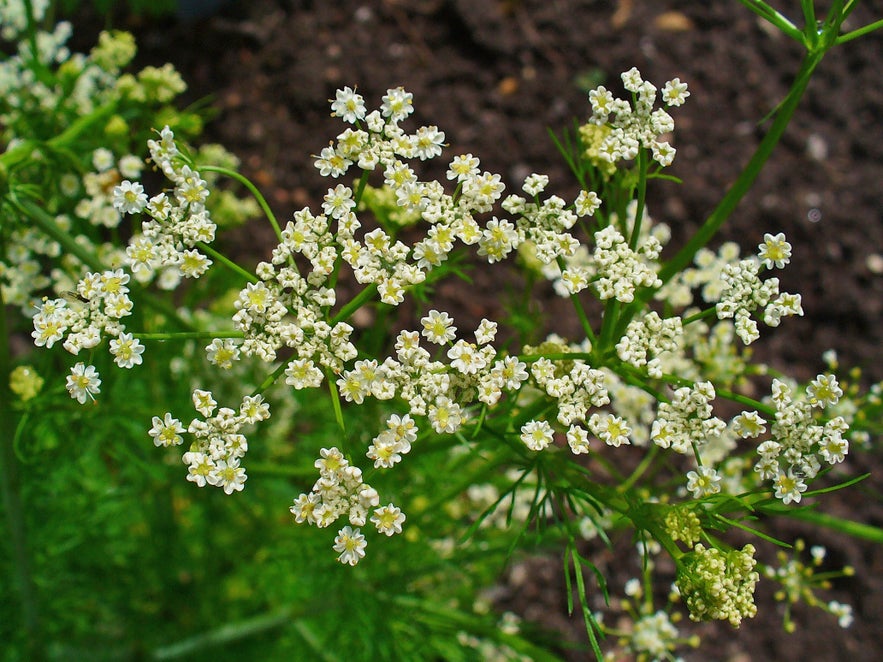 Photo from Wikimedia, Creative Commons, by H. Zell. No edits made.
Photo from Wikimedia, Creative Commons, by H. Zell. No edits made.
The wildflower caraway is treasured for its tasty seeds, which are a favorite choice to garnish bread rolls, as well as flavoring Iceland's most iconic drink, Brennivín. Also known as “Black Death,” the Icelandic schnapps Brennivin often accompanies fermented shark, but it's also tasty in its own right.
Caraway is called Kumen in Icelandic, as is Cumin, which can make for some confusion, but nothing that can't be fixed with a good nose.
Angelica (Angelica archangelica)
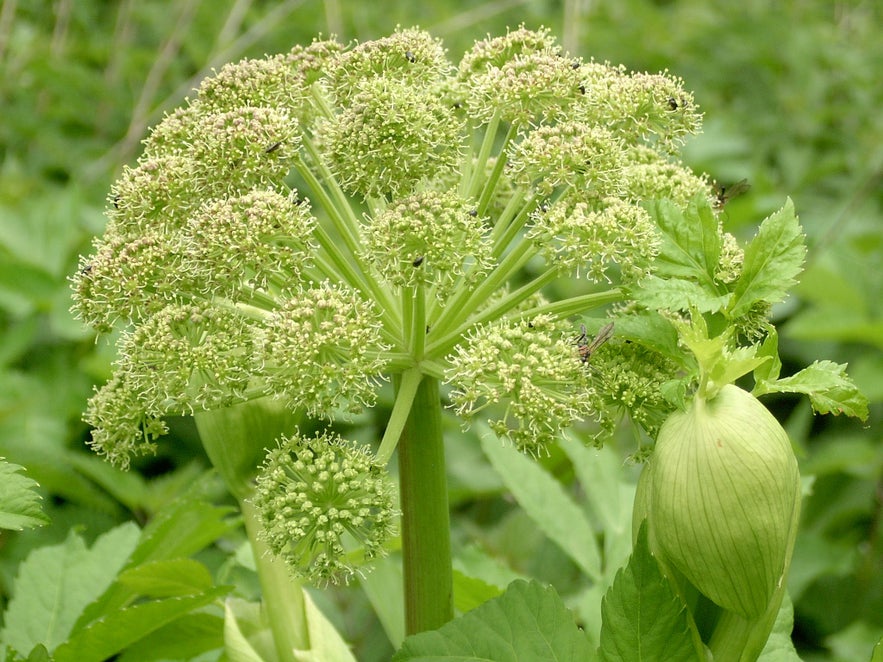 Photo from Wikimedia, Creative Commons, by Krzysztof Ziarnek. No edits made.
Photo from Wikimedia, Creative Commons, by Krzysztof Ziarnek. No edits made.
Angelica ranks supreme in the world of Icelandic flora, referred to as “Hvonn” and known as “Angel herb” in Anglo terms, thanks to a monk in the midst of the plague. This medical marvel was supposedly brought to Iceland by its first settlers.
Along with livestock, this plant was considered invaluable for the survival and success of the nation.
Recently, Angelica has been scientifically proven to alleviate and prevent stomach ailments, respiratory problems, infections, antitumor activity, digestive agitation, congestion, cramps, flatulence, and liver problems, as well as cancer. The list is endless.
Not only has it provided nourishment for Icelanders since the time of settlement, but it has also served as a medicinal aid for the Vikings and their descendants ever since it adapted to Iceland’s harsh conditions.
Angelica was so widely valued that it served as currency within Iceland and abroad. It has been so highly prized throughout the years that in the 12th century AD, laws were put in place to protect cultivators from burglary.
The whole plant can be used, including its roots, as a lifeline for early Icelanders. This miracle plant is still valued today. Angelica literally translates from Latin as “Angels' Root”; its precious value has never been overlooked. So much so that many places in Iceland bear its name; Hvannadalshnukur, the highest peak in Iceland, is named after it and literally translates to “Angel Root Valley Peak”.
Dulse (Palmaria palmata)
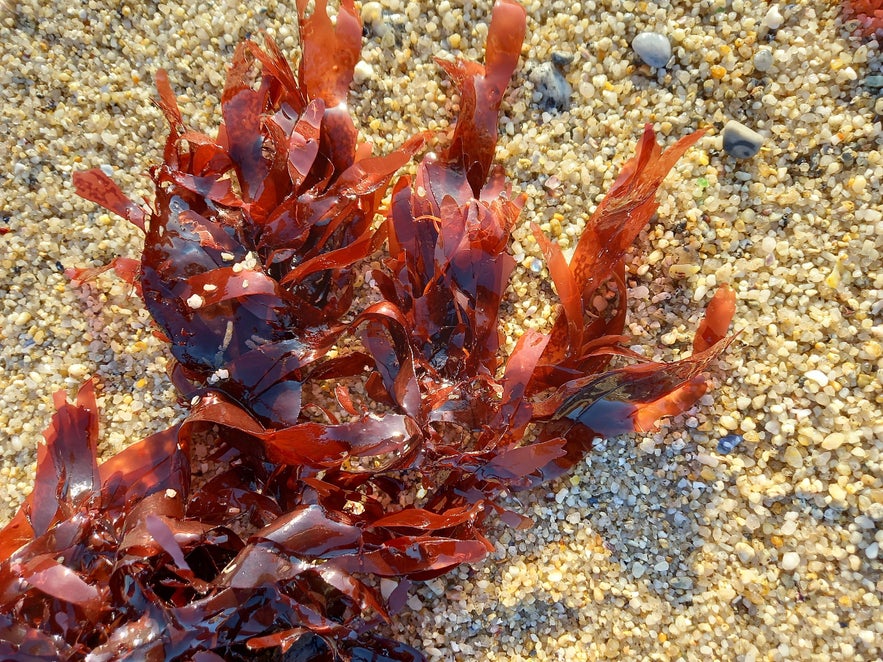 Photo from Wikimedia, Creative Commons, by Voctir. No edits made.
Photo from Wikimedia, Creative Commons, by Voctir. No edits made.
The history of Iceland is deeply intertwined with the sea. Not only did the Viking settlers have to cross it to reach Iceland, but it has also long served as a critical source of food, not only for fish. Dulse is known as “Sol” in Iceland, and it is a type of red seaweed that has nourished Icelanders since the first settlers arrived in the 10th century.
It was collected in vast quantities in the spring and summer and then dried to stockpile or for trade. Winters were long and hard, and dulse could often be depended on as a reliable source of nutrition.
Traditionally, it was boiled and eaten with butter or cod liver oil. It's recently making a bit of a comeback as a tasty health food, with some people liking its flavor more than bacon!
Kelp/Brown Algae (Phaeophyceae)
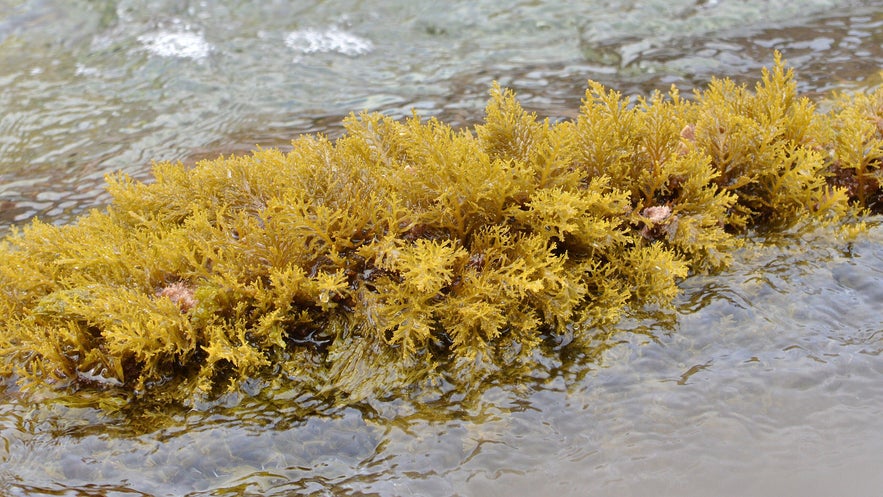 Photo by Wikimedia, Creative Commons, by Ryan Hodnett. No edits made.
Photo by Wikimedia, Creative Commons, by Ryan Hodnett. No edits made.
These brown algae are farmed in Iceland, especially in Breidafjordur Fjordur in the Westfjords of Iceland. It is especially coveted for its role in skin care products and also in beauty products in general, as it acts as an organic binding agent. It can also be dried and ground down for use in nutritional powders, as well as animal feed.
Moss (Bryophytes)
It is not possible to write an overview of plants in Iceland without mentioning moss. Famously thick woolly green moss covers much of Iceland's lava landscapes, and over 600 species have been discovered so far. The endless fields of rolling green blankets leave no surprise that mosses account for more than half of all the vegetation cover in Iceland.
Mosses are multicelled, flowerless plants that are capable of photosynthesizing, and they grow in clumps or “mats.” Scientists reckon that moss arrived in Iceland by reproductive spores and was most likely one of the first species to colonize the island.
Mosses are very well suited to the Icelandic climate. It does well in wet conditions, and during cold spells, they can “hibernate” or stay dormant while waiting for better conditions.
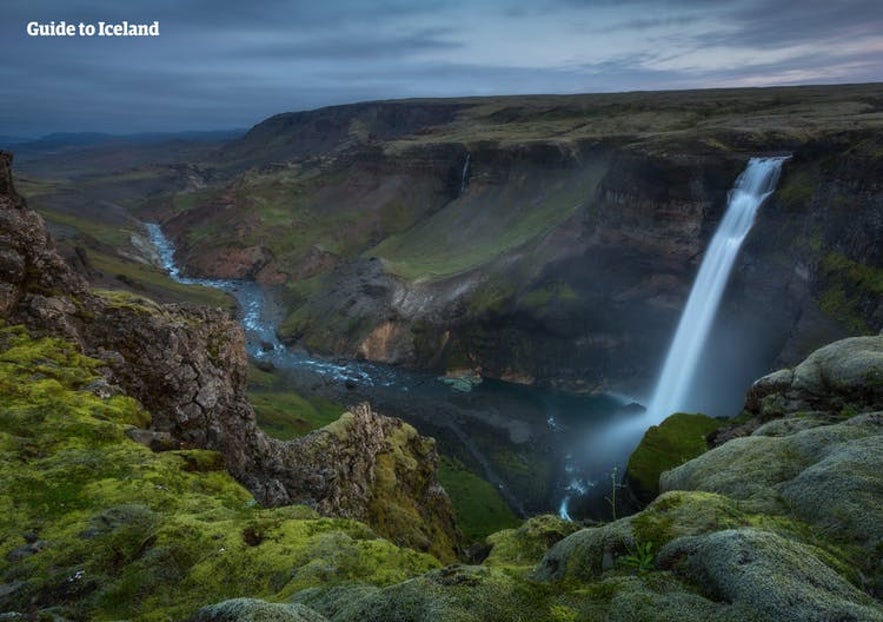
In the challenging and barren landscapes, moss has flourished, and Icelanders have a deep respect for this resilient group of species. Although they are robust in terms of being able to withstand the weather, they are delicate in that they take a long time to grow, less than half an inch (1 centimeter) per year in good conditions.
A lot of damage can be caused by walking over these carpets of moss, and the Icelandic government has made noble efforts to educate those visiting Iceland to be mindful of where they roam so as not to cause unintentional damage underfoot.
- See also: Sustainable Tourism in Iceland
One of the most infuriating purposeful cases of vandalism occurred on a hill near the Nesjavellir Area in the South of Iceland, where someone wrote “Send Nudes” into the hillside by tearing up huge clumps of this precious vegetation.
Justin Bieber filmed shots for his ‘I’ll Show You’ music video on particularly delicate moss in the South of Iceland and received condemnation from the local park rangers. So, if you're coming to Iceland, please don't step on the moss!
Moss balls/Marimo (Aegagropila linnaei)
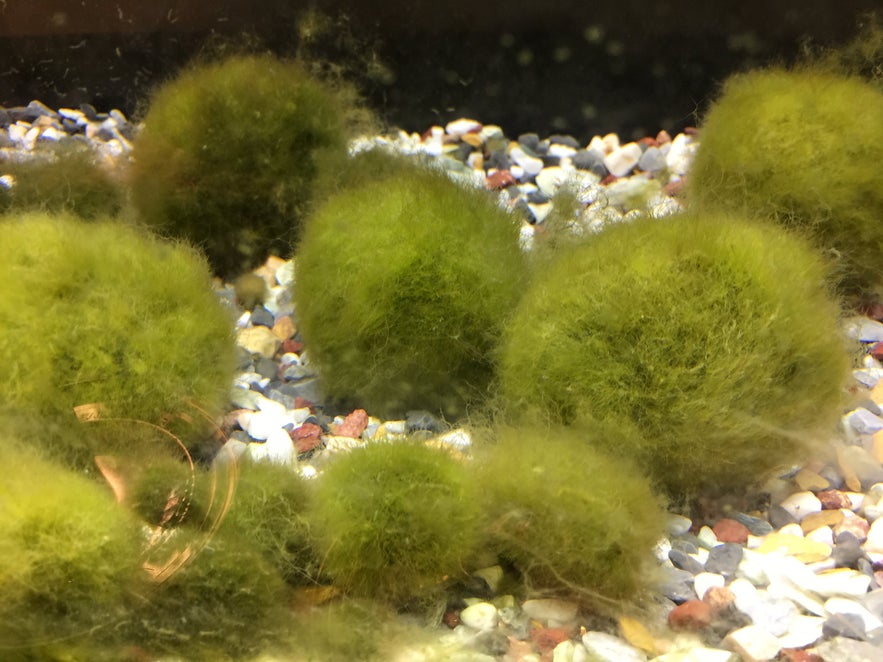
Photo from bryan...
Moss balls are an extremely rare phenomenon and are only found in a handful of lakes around the world. Here in Iceland, they are found in Lake Myvatn ("Midge Lake") in the Northern region of the country.
These unique algae formations are caused by very gentle wave action, which rounds the plant matter into these rather adorable spherical organisms. In Iceland, they are called "Kuluskitur", which translates to "Dirtballs," and their survival might be threatened as their colonies have been rapidly declining in recent years.
In Japan, some enthusiasts treasure marimo as pets, and here in Iceland, they have been a protected species since 2004.
Iceland Moss (Cetraria islandica)
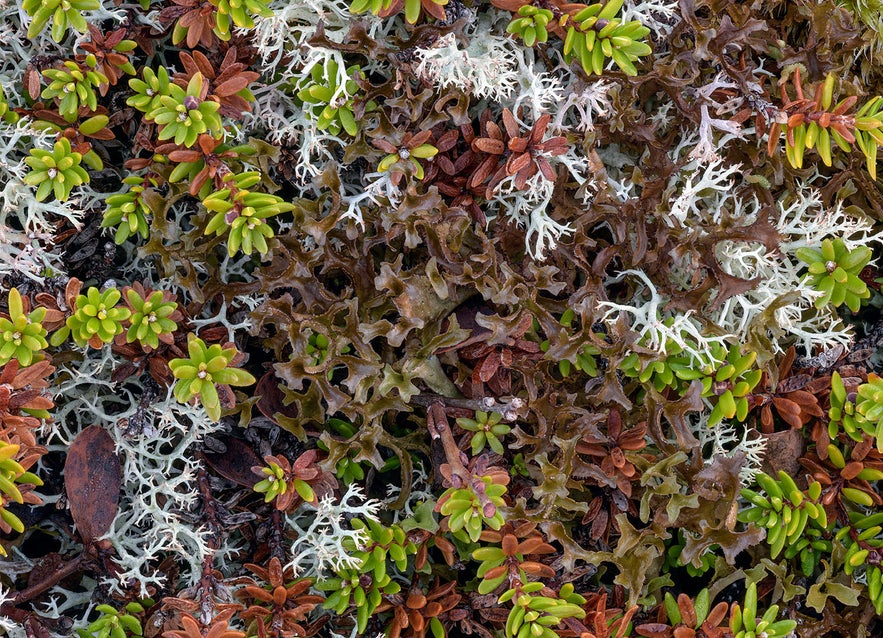
Photo from Richard Droker.
Contrary to its name, Iceland moss is actually not a moss; it's a lichen. Algae and fungus form a mutually beneficial relationship to create lichen, a dynamic symbiote. Along with moss, lichen is thought to be one of the first plant species to colonize the barren lava landscape, and it can be considered an extremophile as it tends to thrive in extreme conditions.
Iceland moss has the appearance of a moss, which is where it gets its name. It is called 'fjallagros', which translates to 'mountain grass,' and it has long been revered for its medicinal properties. It is used to treat loss of appetite, the common cold, irritation of the mouth or throat, dry coughs, indigestion, fevers, lung disease, and the list goes on!
The main form of preparation is steeping the lichen in hot water to make tea, or it can be heated in milk for extra comfort. In times of hardship, Iceland moss was eaten, and today, it has been used to flavor some liquors and schnapps.
Reindeer Moss (Cladonia rangiferina)
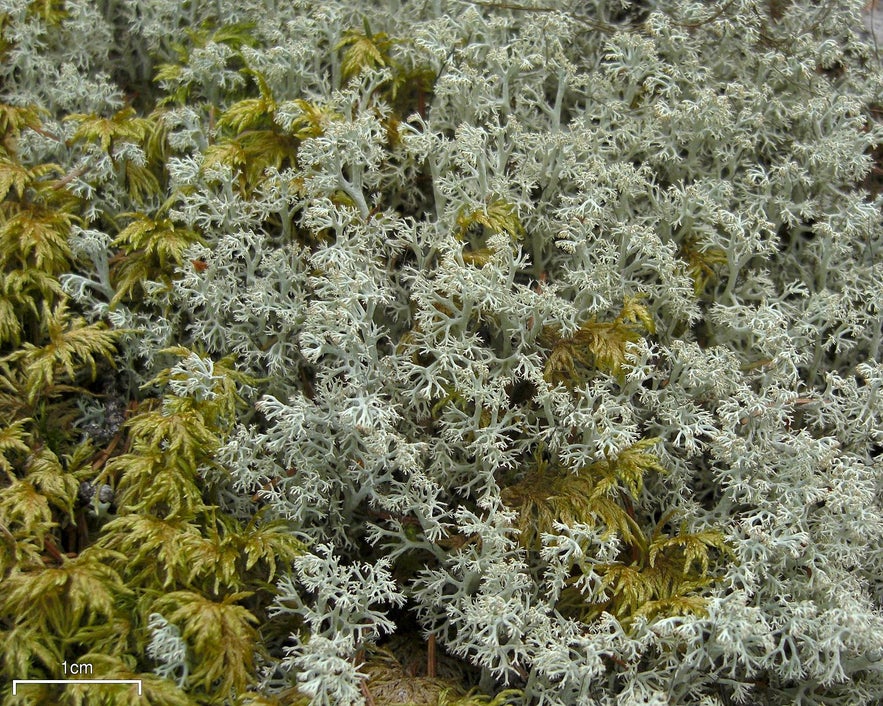 Photo from Wikimedia, Creative Commons, by Jason Hollinger. No edits made.
Photo from Wikimedia, Creative Commons, by Jason Hollinger. No edits made.
Once again, the name is misleading here as Reindeer moss is, in fact, a lichen. It is native to Iceland and has recently been discovered to secrete medicinally useful substances that could prove useful in the treatment of cancer.
How to Protect Iceland's Flora on Hikes
As you can see, Iceland's stunning landscapes are home to a diverse range of plant species. However, just because they can thrive in harsher conditions, they can actually be quite fragile.
Whether you plan on hiking across the country's wilderness or driving out to scenic locations, always make sure to treat the plant life with care and respect.
Stay on Designated Trails
Following marked paths prevents accidental trampling of the delicate Icelandic flora that thrives in the country's rugged landscapes. Many plants native to Iceland, including the mosses and lichens mentioned earlier, take decades to recover from even minor disturbances. Staying on trails helps support conservation efforts aimed at protecting unique Iceland vegetation.
Don't Drive Offroad
If you're planning on driving in Iceland, know that driving off established roads can cause severe, lasting damage to the fragile soils that support the growth of flora. Additionally, tire tracks can crush small and slow-growing Icelandic plants. Off-road driving disrupts their habitats, so make sure to stay on the road.
Don't Litter
Discarded waste introduces toxins that can harm plants. For example, plastics and food scraps can alter the soil chemistry, which endangers flowers in Iceland that rely on specific nutrients found in untouched environments. Responsible waste disposal protects the scenic beauty and delicate Iceland flower species.
Only Camp in Specified Spots
Using designated campsites helps reduce damage to sensitive vegetation, particularly areas where flowers bloom in seasonal bursts. Making improvised campsites can compress soil and damage the root systems of Icelandic flowers, limiting their ability to absorb water and thrive.
Top Nature Tours in Iceland
To experience the very best of Icelandic nature, here are some of the highest-rated adventures among travelers.
-
Impressive Landmannalaugar Bus Tour with Hiking & Nature Baths from Reykjavik — Hike through Landmannalaugar Valley, soak in the nearby hot springs, and much more during this eventful 13-hour trip.
-
Thrilling 9-Hour Horseback Riding and Hiking Tour in Reykjadalur Valley with Transfer from Reykjavik — Discover the beauty of Icelandic nature on this memorable horseback riding and hiking tour through the stunning Reykjadalur Valley.
-
Scenic 9-Hour Hiking Tour on the Waterfall Trail in East Iceland with Transfer from Egilsstadir — Embark on an adventure through the wilderness of East Iceland and witness the beauty of several waterfalls in the Jokulsa Glacial River.
-
Scenic 5-Day Hiking Tour from Landmannalaugar to Thorsmork with Transfer from Reykjavik — On this incredible five-day tour, you'll traverse beautiful highlands, stunning valleys, and other unforgettable places.
-
Scenic 6-Day Hiking Tour in Iceland from Landmannalaugar to Thorsmork with Fimmvorduhals Day Hike — Across six memorable days, you'll trek from Landmannalaugar to Thorsmork along the iconic and mesmerizing Fimmvorduhals Mountain Pass.
-
10-Day Self-Drive Tour of the Complete Ring Road of Iceland with Top Attractions & Snaefellsnes — Experience the mesmerizing landscapes of Snaefellsnes and other Icelandic locations at your own pace with this 10-day self-drive tour of the Ring Road.
-
Unforgettable 1-Week Self-Drive Tour of West and South Iceland with the Golden Circle — During this week-long self-drive tour, you'll traverse diverse environments across the South Coast, Golden Circle, and Snaefellsnes Peninsula.
Discover the Beauty of Icelandic Nature During Your Visit
Iceland is home to a wide array of unique species that, when combined with its one-of-a-kind landscapes, create memorable and breathtaking natural environments you'll be hard-pressed to see elsewhere. If you're captivated by the mesmerizing valleys and wilderness of the land of ice and fire, you can thank the plants, trees, and moss that call the country home!
Did you find this article useful? Are there any plants missing from this list that you think should be there? Do you have a favorite plant in Iceland? Make sure to leave your thoughts and questions in the comments box below.
